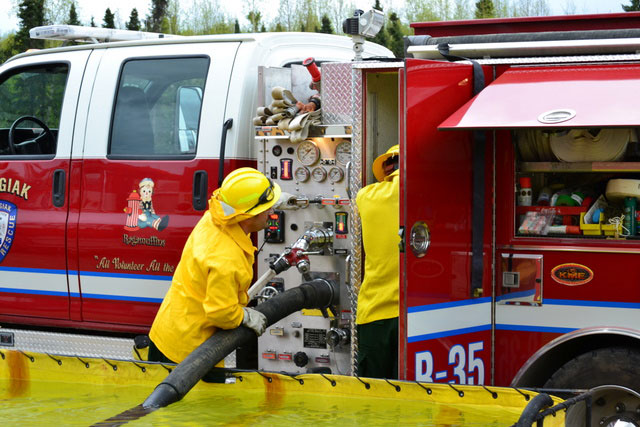VOLUNTEERS SINCE 1952!

The Chugiak Volunteer Fire and Rescue Company, Inc. provides fire protection and EMS response to an area of approximately 47 square miles and a population around 11,000. Established by several local homesteaders in 1952, the CVFRD presently has a fire service area that extends from the Knik River bridge on the New Glenn Highway in the north, to the North Eagle River overpass and access road to the south, and is bordered by the Cook Inlet to the west and the Chugach State Park and Chugach Mountains to the east.
- Established in 1952
- Fire protection and EMS response
- Serving approx 47 square miles
- Includes five stations
- Suburban and rural protection
- Both residential and commercial
The Chugiak Volunteer Fire and Rescue Company, Inc. service area provides for a mix of suburban and rural fire/EMS protection needs. Residential property makes up the majority of structures within this service area. However, also included in the response area are light industrial and commercial occupancies, a light aircraft airport, a large senior center, three elementary schools, one middle school, high school and several long-term care facilities for the elderly. Many lakes, streams and outdoor recreational areas, along with all forms of vegetation found in South-central Alaska, provide for a unique setting for fire protection and EMS response.
Chugiak Volunteer Fire and Rescue Company, Inc. responds to over 1,000 emergency calls per year. Nearly seventy percent of emergency responses are medical in nature.
The Chugiak Volunteer Fire and Rescue Company, Inc. is comprised of members from all walks of life and is purely volunteer. There are over 100 members serving as either Active, Affiliate, Reserve or Junior.
The fire department is divided into four crews, each with a captain and two lieutenants. Each Active member is expected to respond between 60 and 100 hours on nights and weekends during a 4-week rotation. Affiliate members cover the weekday response by committing to 36 hours per month. Reserve and Junior members fill in as needed and as available.
